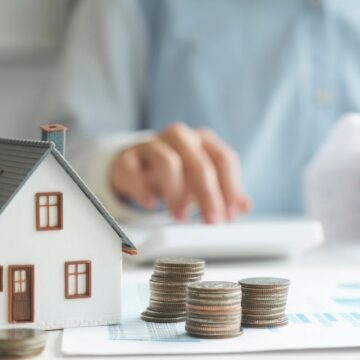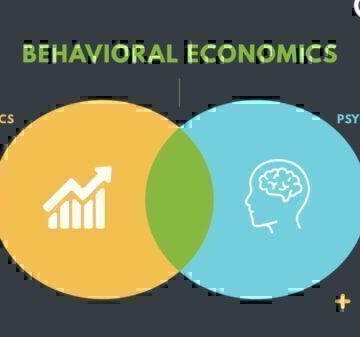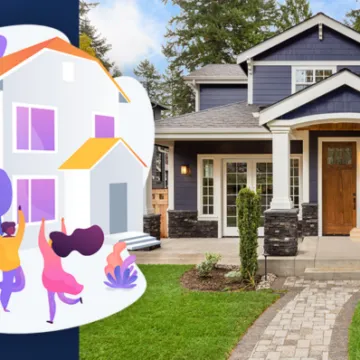Did you know that June is National Homeowner’s Month?
Whether you’re an aspiring homeowner, current homeowner, or a homeowner struggling to stay on top of mortgage payments or related costs, the decision to buy and maintain a home comes with unique rewards and challenges. And no two situations are the same.
When it comes to guidance on All Things Housing, it’s easy to fall down the research rabbit hole or get lost in endless industry jargon. Which is where we come in. 😊
We’ve put together this comprehensive GreenPath guide as a way of steering through the most common hurdles of homeownership. From free online courses to webinars to mortgage calculators, our hope is that you’ll find something here that can answer your burning questions or, at minimum, remind you that you don’t have to figure it out all on your own.
Housing Counseling Services
- Homebuyer CounselingHomebuyer Counseling: Homeownership often instills a sense of personal pride and accomplishment. It can give you greater freedom and add to your financial security. But it can also be a complex and layered process. We can help navigate your experience, from the realtor’s role to home inspection.
- Reverse Mortgage CounselingReverse Mortgage Counseling: We’ll explain how it works, including payout options, homeowner costs, tax implications, and other benefits and drawbacks. Once you complete a mortgage counseling session, you’ll receive a certificate that lenders require as part of the loan application.
- Foreclosure Prevention CounselingForeclosure Prevention Counseling: If you are behind on your mortgage or having trouble making your house payment, you are not alone. There are steps you can take to get back on top, and we can help with our foreclosure prevention counseling. Talk to a counselor to learn more.
- 995Hope Hotline: Another valuable resource for those who may have fallen behind in housing payments or face foreclosure/eviction, 995Hope housing counselors help you explore ways to get you back on track. Whether you need a long-term plan or immediate help, the sooner you reach out to a trusted counselor, the better your options.
GreenPath Financial Service
Housing Counseling
Do you have questions about housing? Should you buy a home? Refinance your house? What if you can’t make your mortgage payments? Or your credit isn’t great? GreenPath can help.
LearningLab Online Courses
- Housing 101Homebuying 101: Buying a home involves some major decisions; it is a process that can be both exciting and intimidating. This kind of decision comes with lots of planning, and there are a few steps to consider before hiring a realtor and scheduling open houses all over town. This five-part course walks you from planning and preparing to closing day.
- Forbearance and Other Mortgage Payment OptionsForbearance and Other Mortgage Payment Options: In this course we will:
- Share an example of a conversation with a servicer so you get an idea of what to expect and the options available before you call
- Provide a list of vocabulary words to have handy when discussing your mortgage with your servicer
- Consider the pros and cons of the options to keep and to leave your home, to help you decide what you want
Webinars
- Managing the Ups and Downs of Homebuying & OwningManaging the Ups and Downs of Homebuying & Owning: Your home is one of the largest investments you will make in your lifetime, and typically your largest monthly expense. Learn how to navigate the homeownership journey as interest rates rise. Whether you are considering purchasing your first home or already own your home, we are here to offer guidance. Learn how to manage your budget and protect your housing investment during a hardship.
- A Guide to Successful HomeownershipA Guide to Successful Homeownership: Are you excited to buy and move into your first home? Do you want to remove as much stress and frustration as possible? We are here to help. Join HUD certified housing counselors to learn about the steps to become a homeowner and how to maintain the home once you have a place that’s all your own.
Real $tories Podcast
Real $tories is a financial podcast where our guests and clients share their money journeys in their own words. Expect authenticity, vulnerability, and a little bit of inspiration.
- Episode 24Episode 24: Shannon McLay – Building Financial Strength with the Founder/CEO of Financial Gym
- Episode 27Episode 27: Regina’s Story – 3 Paths to a Brighter Future
- Episode 29Episode 29: Kimberly – “Side Hustling” to a More Balanced Life
- Episode 35Episode 35: Stephanie – Finding Opportunity in Adversity
- Episode 37Episode 37: Finding Forgiveness – David Tackles Loans, Law School, and Supporting a Family
Calculators
Mortgage CalculatorsMortgage Calculators
- Use these mortgage calculators to help make decisions such as:
- How much money should I borrow?
- How much will I pay in interest?
- How much will I pay each month?
- How much do I need to save?
Housing Blogs
- Housing Counselors Help You Stay in Your HomeHousing Counselors Help You Stay in Your Home
- Is Rent to Own Right for You?Is Rent to Own Right for You?
- Homeownership Starts with a PlanHomeownership Starts with a Plan
- What are the Common Types of Mortgages?What are the Common Types of Mortgages?
Downloadable Guide
Mortgage Assistance GuideMortgage Assistance Guide: Mortgage assistance can be complex and confusing. This guide can help make it easier. This mortgage assistance guide provides:
- Actionable steps to take now to protect your home
- Links to useful resources
- A summary of the options mortgage servicers can offer depending on the severity of your situation










